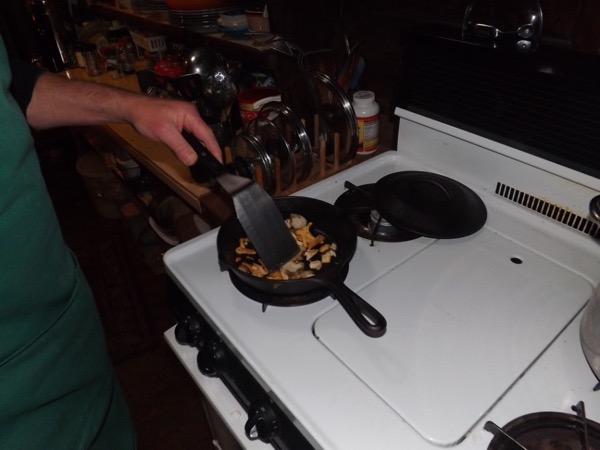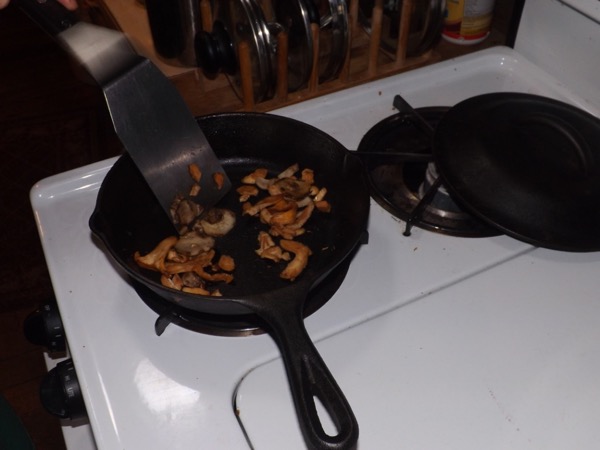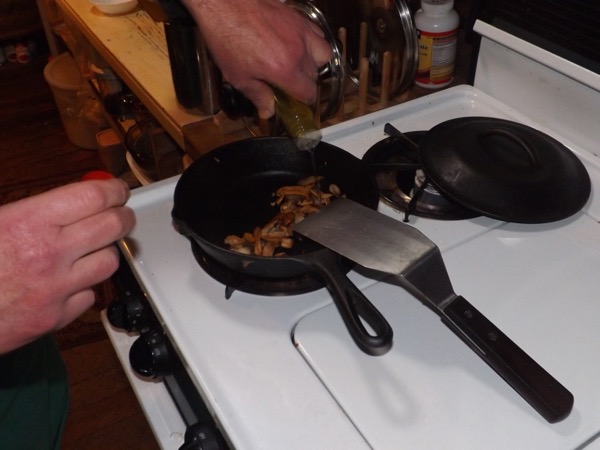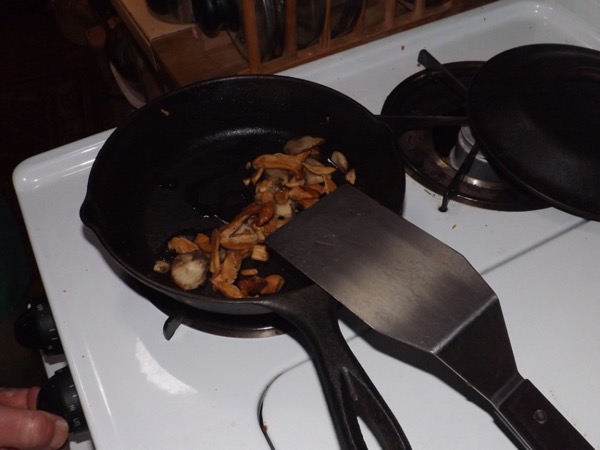In writing the recipe for Cheesy Mushroom Pie, I mention dry sautéing. I ransacked older posts looking for instructions to link on how to dry sauté mushrooms. I’m sure I’ve written this down before—I certainly refer to the process enough. But, it doesn’t seem to be here. This is an important skill for any amateur mycologist (see Gourmet Delicacies for Free: Foraging for Mushrooms).
Dry sautéing works well to cook most wild mushrooms. Very few of the mushrooms we harvest should be eaten raw; apparently, some people do, but we play it safe. We use this method to cook mushrooms initially; how far we take the process depends on how much additional cooking they’ll get in the dish in which we use them.
I learned about dry sautéing from David Arora’s indispensable book, All That the Rain Promises and More (paid link). The book tells very specifically how to prepare mushrooms this way. I’ll tell you how we do it, in my own words:
Clean the mushrooms, then slice them thinly, ¼ inch or thinner. We try to keep the pieces fairly uniform in size, but that doesn’t seem to matter too much.

Place the mushrooms in a pan over high heat. This is a small batch of mushrooms: one each, chanterelle, bolete, and hedgehog (Photo: Sarah A. Zeiger).
Place a well seasoned cast iron skillet on high heat. After it’s warmed well, put the mushroom slices in the pan. Don’t add oil or other grease at this point.
Salt the mushrooms generously. This will draw out the moisture in the flesh, which is key.

Salting the mushrooms. It’s hard to see, but I’m using a salt grinder here (Photo: Sarah A. Zeiger).
Stir the mushrooms around vigorously and constantly with your spatula—don’t allow them to sit still in the pan for long.
The natural moisture in the mushrooms will begin to flow out into the pan. The amount of moisture varies. If the mushrooms are very fresh, and your weather has been wet, you’ll see a lot of moisture! If the mushrooms are drier, not so much.

We picked these mushrooms two days before cooking, so not much moisture here (Photo: Sarah A. Zeiger).
Keep stirring them around for a few minutes; the mushrooms will begin to cook in their own juices. Meanwhile, the high heat of your pan will begin to evaporate the moisture. Watch this carefully!
When the moisture evaporates away, turn the heat to low, drizzle olive oil, or add a pat of butter to the pan, and continue stirring.
At this point, things get a bit less certain. Your mushrooms will continue to cook until you remove them from the pan. When you do this depends on your personal taste, and what you intend to do with the cooked mushrooms. Remember that a cast iron pan holds heat—don’t just turn the flame off and move on to the next step in the meal. Your mushrooms can easily overcook this way.
That’s really all there is to it! It happens fast, and once you get the hang of it, you can adjust the process to your needs. Sometimes we pour off the liquid to use in dishes. It all just depends on the condition of your mushrooms, and your plans.


